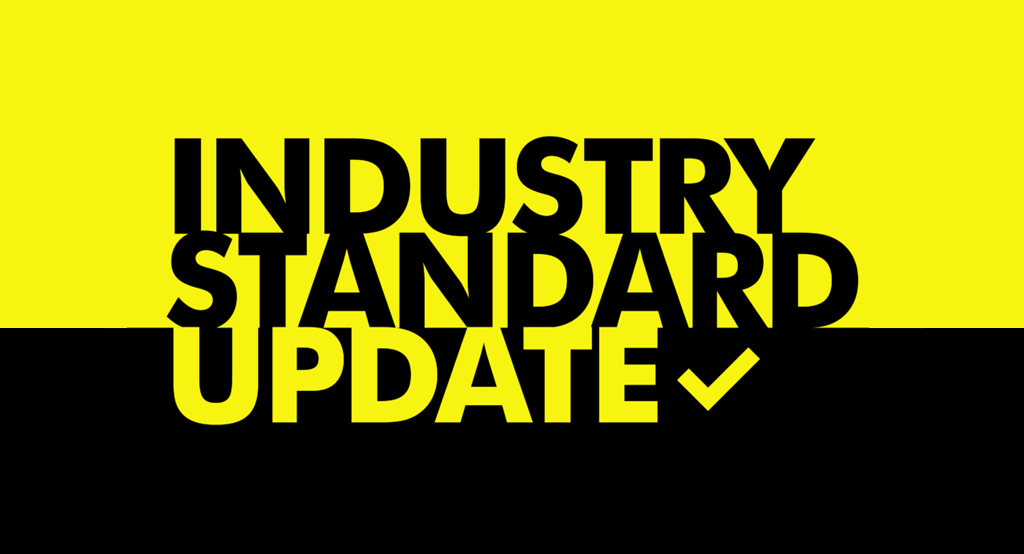
Industry Standard Update 079
Industry Standard Update 079: Amendments to the Gas Safety (Installation and Use) (Amendment) Regulations 2018
This Industry Standard Update provides an overview and highlights areas of significant change in the published version of The Gas Safety (Installation and Use) (Amendment) Regulations 2018.
Introduction
Between November 2016 and January 2017, the HSE consulted on proposals to revise the Gas Safety (Installation and Use) Regulations 1998 (GSIUR)(1).
Subject to parliamentary approval, the revised Gas Safety (Installation and Use) (Amendment) Regulations 2018(2) will come into force on 6 April 2018.
The Gas Safety (Installation and Use) (Amendment) Regulations 2018 are available to view at: http://www.hse.gov.uk/pubns/books/l56.htm
Regulation 2(4) (g)
Regulation 2(4) (g) relates to the disapplication for compressed natural gas (CNG) filling stations fed by a dedicated metered gas supply from the majority of the requirements of GSIUR and has been revised to state: “Installations downstream of an isolation valve which –
(i) form a system exclusively used for the compression of gas
(ii) are primarily used to supply compressed gas to vehicles, and
(iii) incorporate at least one gas compressor which has an electric motor input power rating exceeding 5 kilowatts.”
Approved Code of Practice (ACoP) 63, which provides guidance to Regulation 2(4) (g), has been revised to state: “Such installations are either a separate gas supply or an isolatable branch off an existing installation starting at the first isolation valve. This clause covers fittings (including pipework), boosters, compressors, storage and dispensers used primarily for the compression of gas for supply to the fuel tank of a vehicle. However, it does not extend to gas fittings and appliances used for other applications on the same premises.”
Regulation 26(9) (c)
Regulation 26(9) incorporates exemption certificate No 1 and has been revised to state: “Where a person performs work on a gas appliance they shall immediately thereafter examine –
(a) the effectiveness of any flue
(b) the supply of combustion air
(c) subject to paragraph (ca), its operating pressure or heat input or, where necessary, both (ca) if it is not reasonably practicable to examine its operating pressure or heat input (or, where necessary, both), its combustion performance
(d) its operation so as to ensure its safe functioning.”
ACoP 245 states that: “Regulation 26(9) (ca) applies where there is no meter or meter display to directly measure the heat input and it is not possible to measure the operating pressure.”
Regulation 36
Regulation 36(3) (a) and (b) has been revised to include a reference to Regulation 36A.
Regulation 36(3)(C) has been revised to clarify which defects should be recorded and states:
(c) Ensure that a record in respect of any appliance or flue so checked is made and retained until there have been two further checks of the appliance or flue under this paragraph or, in respect of an appliance or flue that is removed from the premises, for a period of two years from the date of the last check of that appliance or flue, which record shall include the following information –
(i) the date on which the appliance or flue was checked
(ii) the address of the premises at which the appliance or flue is installed
(iii) the name and address of the landlord of the premises (or, where appropriate, his agent) at which the appliance or flue is installed
(iv) a description of and the location of each appliance or flue checked
(v) any SAFETY defect identified
(vi) any remedial action taken
(vii) confirmation that the check undertaken complies with the requirements of paragraph (9) below
(viii) the name and signature of the individual carrying out the check, and
(ix) the registration number with which that individual, or their employer, is registered with a body approved by the HSE for the purposes of Regulation 3(3) of these Regulations.
Regulation 36(A)
Regulation 36(A) has been revised to introduce flexibility in the timing of landlords’ annual gas safety checks and states:
Determination of date when next safety check is due under regulation 36(A)
36A –
(1) Where a safety check of an appliance or a flue made in accordance with Regulation 36(3) (a) or (b) is or was completed within the period of two months ending with the deadline date, that check is to be treated for the purposes of Regulation 36(3) (a) or (b) as having been made on the deadline date.
(2) Subject to paragraph (3), the landlord may ensure that an appliance or flue is checked for safety within the two-month period beginning with the deadline date, instead of checking it within the 12-month period ending with that date.
(3) The discretion conferred by paragraph (2) may be exercised –
(a) only once in relation to each appliance or flue in the relevant premises, and
(b) only in order to align the deadline date in relation to the next safety check of that appliance or flue with the deadline date in relation to the next safety check of any other appliance or flue in the same relevant premises
(4) In this regulation “the deadline date” in relation to a safety check for an appliance or flue means the last day of the 12-month period within which the check is or was required to be made under Regulation 36(3) (a) or (b).
The following ACoPs provide guidance on compliance with Regulation 36(3):
304 The changes set out in regulation 36A aim to offer more flexibility in the gas safety checking regime – however, it is not compulsory for landlords to take advantage of this change. If they prefer, landlords can continue with their current regime of gas safety checking, as long as it meets the legal minimum requirements as set out in Regulation 36.
305 With the introduction of the new Regulation 36A, from 1 April 2018 landlords will be able to have gas safety checks carried out any time from 10 to 12 calendar months after the previous check but still retain the original deadline date as if the check had been carried out exactly 12 months after the previous check.
Record-keeping
306 To benefit from this new flexibility and retain the deadline date, the landlord will have to demonstrate that they have complied with the law and carried out the gas safety checks within the required timescales. The record will need to be kept until two further gas safety checks have been carried out.
307 Where a landlord cannot provide the necessary audit trail/
documentation, including the two previous gas safety records, the expiry date of the current gas safety check will be taken as 12 months from the date of the last gas safety check.
308 This demonstration that they have complied with the law may take the form of a computerised database or a paper file or other means as long as there are records showing the date of previous gas safety checks, the date of latest check, and the preserved deadline date (resetting this as and when necessary – see section below on “re-setting the clock”), along with copies of the previous two years’ landlords’ gas safety record.
309 There is no legal requirement to include:
– an expiry date of the landlords’ gas safety record, or
– the earliest date you can have your next gas safety check (and retain the deadline date) on the gas safety records, but landlords may find it helpful to include these details to:
– ensure they can demonstrate the necessary audit trail to show that consecutive gas safety checks have been carried out in the prescribed 10-12-month window, and so the deadline date has been retained
– give tenants confidence and clarity over the period of validity of the gas safety record.
310 Even if the engineers include this information on the gas safety records, the legal duty remains with the landlord to be able to demonstrate that gas safety checks have been made within the required timescales.
Resetting the clock
Gas safety check carried out less than 10 months since the previous check:
311 Where a gas safety check is carried out at less than 10 months following the previous gas safety check, this will have the effect of “resetting the clock” and the deadline date will now be 12 months from the date of this latest check.
Gas safety check carried out after the preserved deadline date:
312 Where the property remains tenanted it is an offence to have no current gas safety check record in place.
Gas safety check carried out after the preserved deadline date, ie, where the property was vacant when the previous gas safety check expired:
313 Where a gas safety check is carried out more than 12 months after the previous gas safety check, this will have the effect of ‘resetting the clock’ and the new deadline date will be 12 months from the date of this, later, gas safety check.
One-off flexibility to bring dates of safety checks on different gas appliances in the same premises back into line:
314 There is a one-off flexibility permitted to allow landlords to re-align the dates of safety checks on existing appliances and a new appliance within 12 months of its installation. For example, if a new appliance is installed during the window between the actual date of check and the preserved deadline date of check of other appliances, the new appliance may be checked for the first time at the same time as the next safety check of the other appliances.
Regulation 40A
Regulation 40A has been added to GSIUR and states:
(1) The Secretary of State must from time to time –
(a) carry out a review of the regulatory provision contained in Regulations 2(4)(g), 26(9)(c) and (ca), 36(3) and 36A, and
(b) publish a report setting out the conclusions of the review.
(2) The first report must be published before 1 April 2023.
(3) Subsequent reports must be published at intervals not exceeding five years.
(4) Section 30(4) of the Small Business, Enterprise and Employment Act 2015 requires that a report published under this regulation must, in particular –
(a) set out the objectives intended to be achieved by the regulatory provision referred to in paragraph(1)(a)
(b) assess the extent to which those objectives are achieved
(c) assess whether those objectives remain appropriate, and
(d) if those objectives remain appropriate, assess the extent to which they could be achieved in another way which involves less onerous regulatory provision.
(5) In this regulation, “regulatory provision” has the same meaning as in sections 28 to 32 of the Small Business, Enterprise and Employment Act 2015 (Section 32 of that Act).
Summary
As previously stated, this Industry Standard Update is an overview of the information contained in the amended regulations. Registered businesses should be aware that they have a responsibility to ensure that they are fully apprised of all of the requirements of the whole published regulations.
Bibliography
(1) Gas Safety (Installation and Use) Regulations 1998
(2) Gas Safety (Installation and Use) (Amendment) Regulations 2018
Download Industry Standard Update 079 here

